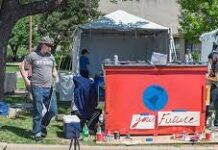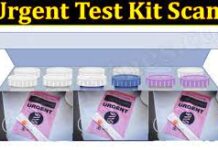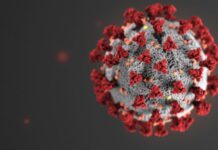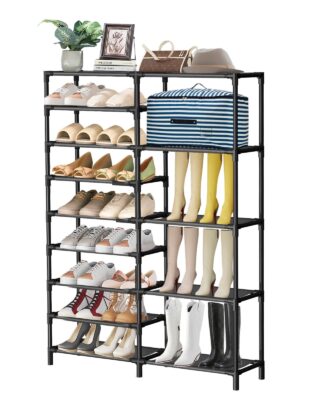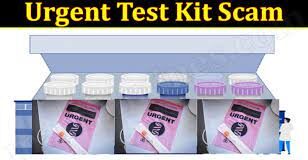Since their underlying improvement almost 20 years prior, atomic science units have advanced from straightforward conventions and reagents for cloning of DNA to the later perplexing reagent sets that empower entire genomic sequencing. At first met with obstruction by some who felt that utilizing them denied scientists of the fundamental information on the most proficient method to make reagents, atomic science packs have taken on a significant job in the natural sciences. In this article we depict unit advancement, why packs have prevailed in atomic science, and how they have made ready for the later broad utilization of center offices.
Presentation
Stroll into any atomic science research facility and you will probably see racks, fridges, and coolers filled with independent reagents and biochemicals, yet in addition with boxes and holders from reagent and instrumentation organizations that incorporate point by point guidelines, supportive clues, and, above all, conventions for use (and for staying away from abuse!).
For BioTechniques’ 25th Anniversary we present a concise audit of a peculiarity that seems, by all accounts, to be special to science and that, for need of a superior name, we call “units.” When we initially joined the BioTechniques Editorial Board (during the 1980s), packs were not normal. What set off this (r)evolution, and has it helped advance the field?
What Is a Kit?
In its easiest structure, a pack comprises of more than one part and a bunch of guidelines. How would we characterize a unit in the atomic science universe? We would suggest that a unit be functionally characterized as containing: (I) a bunch of at least one reagents having variable info materials; (ii) directions that guide the singular scientist to play out similar response on the information materials; (iii) change of the information materials; and (iv) the getting of indistinguishable final products each time the information material is something very similar. Attributes of a decent unit incorporate convenience, clear directions, a decent investigating guide, a fast convention, and, obviously, unwavering quality and reproducibility. A pack might be exceptionally confounded (for instance, a total genome sequencing unit), or as basic as a DNA ligation pack containing a couple of reagents and controls.
A pack for site-coordinated mutagenesis would be an undeniable illustration of a mind boggling unit. Less obviously, a cushion sold with a limitation catalyst could likewise be viewed as a pack, assuming that it incorporates a bunch of guidelines for utilizing it. In the beginning of atomic science, numerous limitation compounds were initially sold without their related cradles. Scientists made their own cradles, an alternate answer for every chemical (general cushion and low-, medium-, and high-salt supports are later creations) (1). Furthermore on the off chance that the analysts utilized great lab methodology, they expected to initially test the supports, chemicals, and DNA for legitimate assimilation. Today, normalized cushions provided with proteins and prepackaged reagent units by and large have killed the requirement for clients to control quality.

Early Days
The present unit producers were not among the sponsors in BioTechniques’ initial years. Indeed, the greater part of the promotions in the diary’s initial two volumes offered clinical and cell-combination hardware, partitions media, and explicit synthetics. In 1983, a few organizations had assembled packs for M13 cloning (New England Biolabs, Bethesda Research Laboratories), exonuclease erasure (Stratagene Cloning Systems), and riboprobes (Promega)- however they advanced them primarily in their indexes. After two years, Promega promotions in BioTechniques offered a framework for making riboprobes utilizing the organization’s pGem vectors. (Another pattern: after 1985, hardware promotions were progressively situated to atomic science axes, magnifying instruments, DNA synthesizers, power supplies, and so forth which probably mirrored this present diary’s developing impact among science lab specialists.)
In the good ‘ol days, producers frequently tried not to utilize “pack.” Instead, we composed and discussed “frameworks” for performing or fostering specific applications. Today, paradoxically, any new issue of this diary conveys numerous ads advancing the most recent smoothed out strategies for performing muddled sub-atomic science conventions. Many are presently even named units.
Starting Opposition to Kits
A quarter century prior, scholastics really discussed whether packs addressed the start of the decay of graduate training. Guides felt that graduate understudies lost something when they performed tests utilizing locally acquired packs as opposed to collecting their own materials and reagents. The instructors expected that understudies would lose the more deeply comprehension of the enzymology and essential nature of the work when they basically followed the headings on the bundle embed.
There were likewise monetary worries: was it worth buying packs when the reagents could be made in-house? Current scientists’ dedication to the present packs proposes that they think about reliable reagents and tried conventions a decent purchase. A significant number of us who have spent piece of our professions delivering units realize that what we are truly selling is quality control, dependability, and reproducibility. Assuming a pack is very much evolved, clients ought to be certain that, assuming they follow the bearings, they will acquire the ideal outcomes. On account of these components quality control of the reagents, matching of parts, marking, and the arrangement of definite manuals-units regularly cost more than the singular parts together. Early pack clients might not have seen how time-and work escalated these means are. In any case, for this situation the additional expense really does to be sure address added esteem. In the good ‘ol days, a response from a unit could cost anyplace from a few dollars (for a straightforward limitation chemical assimilation) to many dollars (for a ligation or lambda-bundling response). These days, specialists can buy a cutting edge DNA sequencing pack that might cost a few a large number of dollars for a solitary use.
Investigating and Controls
As innovators of units, we have regularly attempted to limit the requirement for nonkit reagents, to lessen the expected effect of obscure, client provided reagents and materials. It is exceptionally difficult to dispose of each possible issue, which is the reason units are quite often provided with control reagents; capable cells might accompany plasmid DNA, for instance. Utilizing these provided controls appropriately is a significant contributor to investigating issues when talking with specialized help.
In multistep units, it is regularly essential to incorporate advances that are not time-subordinate. In the mid 1980s, a few engineers felt that no progression in a system ought to be more limited than 15 min. Scientists, we contemplated, would take their own easy routes: assuming we indicated 15 min for a technique, there will undoubtedly be somebody who might be listening who might demand doing the progression in 5 min. It was here and there a test to ensure that the genuinely basic hatching time boundaries were perceived and followed.
In the course of the most recent 10 years, most unit designers have discovered that “speed sells.” So we currently have 10-min limitation protein digests, 5-min ligation packs, 10-min cell changes, and 1-day systems for complete genome sequencing, to give some examples.
Center Facilities: Going Beyond Kits
The authority of center offices in so many college and modern settings in the mid 1990s has additionally expanded the distance between the analyst and the strategy. For instance, 25 years prior, numerous scientists doing DNA sequencing arranged their own deoxyribonucleotide arrangements and even their own polymerases. A few organizations before long started to bundle preassembled, pretested reagents for excellent Sanger dideoxyribonucleotide sequencing. Analysts actually expected to pour and run polyacrylamide gels to succession their DNA tests, in spite of the fact that there were endeavors to give these instant too. The appearance of early research facility robotization, restricted as it was, made it more down to earth for some labs to re-appropriate their sequencing. The center offices emerged. Today, systems that require costly or convoluted gear are quite often consigned to these center offices, particularly as the procedures become progressively perplexing for amateurs: DNA and protein sequencing, oligonucleotide and peptide union, microarrays, catalyst energy, and specific sorts of imaging, for instance.
Center offices permit colleges and businesses to amortize costs over a more extensive base and perform examinations more expense adequately than individual labs or divisions. Instrument-producers, as far as it matters for them, consider the center offices to be archives of ability for beta-testing new innovation and as anxious to take on new instruments since they are as of now far up the expectation to learn and adapt. It could be said, the center office is a pack writ enormous.
Packs and the Unique Role They Have Played in Biology
Why have packs assumed such a significant part in sub-atomic science, and not in, say, physical science and science? Surely, modern scientific experts use units. Water-quality testing units are typical. Units in the actual sciences have never gotten on as they have in the organic sciences. Today, we find packs in the lab, yet wherever from the clinical practice to the home medication bureau. Over-the-counter home tests-descendents of lab units of years gone by-incorporate items for glucose testing, pregnancy testing, pulse testing, ovulation forecast, and pee testing. Advertisements for fresher packs for testing your DNA are even presently seeming on the web and will before long be accessible at your local pharmacy, on the off chance that they are not there as of now.
Are Kits and Core Facilities Guiding Experimental Design in Science?
At last, since certain things have become so natural to do, we presently observe we should do them. As new procedures and advances become famous, they drive the market to deliver units to make these strategies promptly accessible to specialists. In the beginning of atomic science, there were two famous strategies for DNA sequencing: Maxam-Gilbert compound cleavage and Sanger dideoxyribonucleotide chain end. Be that as it may, today, practically all (non-future) sequencing is performed by a color marked strategy in view of Sanger-type sequencing. Would this be able to be an aftereffect of the accessibility of early units for dideoxy sequencing? Or then again is it because of different elements (3)? All the more as of late, RNA obstruction (RNAi) has arisen as a super-charged procedure, and involving it for target approval has expanded our insight into a few exceptionally essential organic cycles. The main RNAi units for routine lab utilize arose not long after the strategy’s revelation. Today, most scientists accomplishing RNAi work likely utilize unit of some sort or another. More units are being delivered each year. Packs in light of Nobel Prize-winning innovation presently show up before the actual prize is granted.
All in all, are packs driving logical test plan? When it is so helpful to buy a pack to play out a sub-atomic science technique, does going through that strategy turn into a prerequisite? Does having a unit effectively accessible predisposition the substance and course of the examination that is being sought after? Has, for instance, the accessibility of packs for quantitative PCR or nonradioactive naming aided drive quality articulation trial and error quicker than if the units were not accessible? Probable, yes. Did these units alter the course of science? Logical not.
“Purchasing In”: The Baking Lesson
Does each home dough puncher truly have to have the crude fixings as a whole and a comprehension of baking science to make a clump of brownies with nuts and chocolate chips? Or then again will a prepackaged blend produce adequate outcomes? Like cake blends, the utilization of units freed scientists from the ordinary undertakings of blending reagents and guaranteeing their quality, letting loose them for the more critical errand of understanding the science. To those of us creating the units, the last part of the 1980s contentions for and against utilizing packs sounded like the mid 1990s contentions about involving adding machines in secondary school math classes.
For what reason Do Kits Sell?
Clients like to embrace a technique, alter it, and sharpen it for their own motivations. Units get on, partially, when clients can “fitting” them thusly. Research by General Mills (depicted by Vance Packard in The Hidden Persuaders (2)) showed that cooks who bought the organization’s cake blends demanded adding milk … despite the fact that the directions expressly called for water. The replacement perpetually made the cakes come up short. In spite of this, customer research showed, the cooks were more joyful with the finished result in the event that they believed they had an impact in the baking system. General Mills changed its blend to require milk, and the item’s fame took off (2).
Likewise, analysts who utilize sub-atomic science units are innately needed to suitable them (in our extraordinary sense). A pack for site-guided mutagenesis requires the specialist to utilize her own vector and oligonucleotides; a unit for a plasmid arrangement requires developing the plasmid to a specific fixation; ligations require an assurance of vector and supplement proportions. The unit is an easy route to results, not a substitute for specialized information. Effective labs would in general utilize packs all the more oftentimes to get quicker results. Different labs saw this achievement and pursued the direction.
The Future
At whatever point another technique becomes significant or famous, atomic science makers rush to react, detecting the market and analysts’ craving for a method for utilizing the apparatus without any problem. Units that accelerate examination or make lab life simpler are additionally popular: RNAi, quantitative PCR, quick PCR, long-range PCR, genotyping, and so on Packs are currently necessary pieces of much natural instrumentation (consider, for instance, the number of PCR and sequencing instrument organizations presently additionally sell related reagents). Packs are currently completely imbued into the atomic science dictionary. As science moves quicker and turns out to be more perplexing, as coaches have less an ideal opportunity to prepare staff and understudies, as time-squeezed encouraging labs need tests to work reliably and over and over, units assume a fundamental part in the atomic science lab and in learning.
Since we are researchers who have involved units in our own examination and who have considered, make, and market them, we have pursued these directions with extreme premium. We presently need to inquire: has atomic science lost anything in the unit upset? Idealists may say that it has: the information for making the essential devices of exploration has moved from understudies and educators to makers. As a rule, indeed, the specific parts of packs are never uncovered, however watched to ensure future patent privileges or protect proprietary innovations. Realists, in any case, may counter that units have significantly sped up logical progression. Biotechnology organizations have utilized units to both increment deals and keep themselves at the bleeding edge of their science. Educators have had the option to zero in on showing the techniques, not on making the reagents. All things considered, units seem to enjoy gave a particular benefit to the sub-atomic science field. Furthermore this they will keep on doing.





